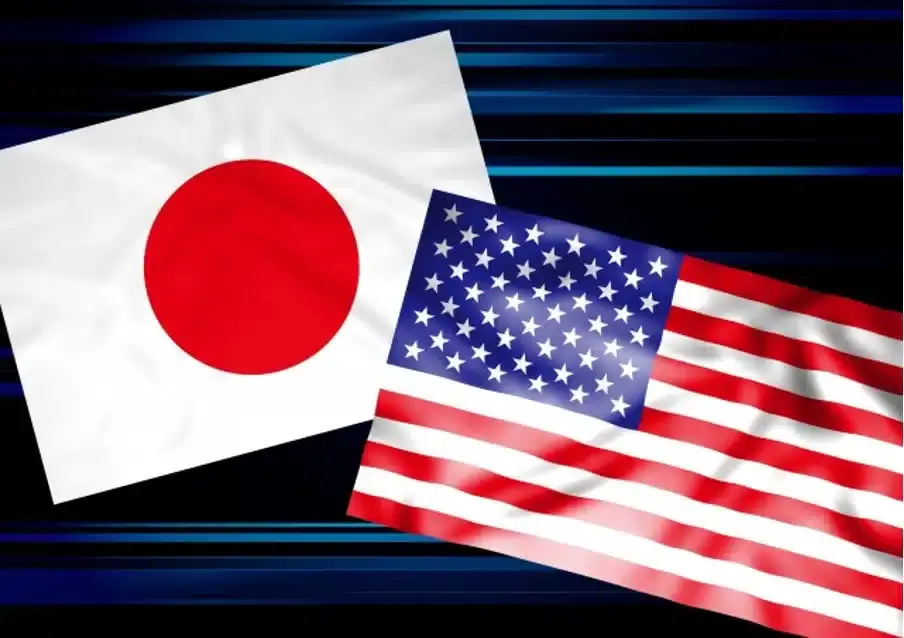Strategic Utilization of Flexible Working Hours Systems in Japanese Labor Law and Legal Risks

The modern business environment is personalityized by constant change and unpredictability. To maintain competitiveness and achieve growth in such an environment, organizational agility that can respond quickly and efficiently to fluctuations in workload is essential. However, Japanese labor laws, with worker protection as their fundamental principle, impose strict and uniform regulations on working hours. While this principle plays an extremely important role in ensuring the health of workers, it also presents constraints on the flexible utilization of human resources and the pursuit of productivity improvements by companies. Article 32 of the Japanese Labor Standards Act limits working hours to 8 hours per day and 40 hours per week as a principle, and any work exceeding this is strictly managed as “overtime work,” with the obligation to pay additional wages.
To bridge the gap between this principled framework and the practical demands of business operations, Japanese labor law has established several exceptional systems. These include the “variable working hours system” and the “flexible working hours system,” represented by flextime and discretionary labor systems. These systems are not merely administrative options but can be powerful strategic tools for optimizing corporate productivity, labor costs, and employee work-life balance. The variable working hours system, which allows for the planned distribution of working hours according to the ebb and flow of business, the flextime system, which entrusts workers with deciding their own start and end times, and the discretionary labor system, which shifts from managing the hours of certain professionals to managing their outcomes, each have different purposes and personalityistics. However, the strategic benefits these systems offer are inextricably linked to the stringent legal and administrative obligations required for their introduction and operation. If even one requirement of the system is not met, its application can be legally invalidated, potentially leading to catastrophic financial risks for companies, such as the obligation to pay substantial amounts of unpaid additional wages retroactively. This article delves deeply into the legal structure of these working hours systems, their introduction requirements, and potential risks from a management perspective.
Principles of Working Hours Regulation Under Japanese Labor Law
The cornerstone of working hours management within the Japanese labor law system is the “principle of statutory working hours.” This principle is established by Article 32 of the Japanese Labor Standards Act, which sets a strict upper limit on employers, mandating that, excluding rest periods, workers must not be made to work more than 40 hours per week and 8 hours per day. These statutory working hours function as the minimum standard to prevent overwork and protect the health of workers. Any work beyond this limit is defined as “overtime work” (work beyond statutory hours) and is legally positioned as an exceptional measure.
For employers to require workers to perform overtime work, two important legal requirements must be met. First, a written agreement concerning overtime work must be concluded with a labor union representing a majority of the workers, or, if there is no such union, with a representative of the majority of the workers. This is commonly referred to as the “Article 36 Agreement (Saburoku Agreement)” based on its foundation in Article 36 of the Japanese Labor Standards Act. Second, once an Article 36 Agreement has been concluded and overtime work is actually performed, employers are obligated to pay additional wages calculated at a legally prescribed premium rate (typically at least 25% above the regular pay).
Here, there is a critically important distinction in practice and in law: the difference between “statutory working hours” and “prescribed working hours.” While statutory working hours are the absolute maximum set by law, “prescribed working hours” refer to the working hours individually established by each company through work rules or labor contracts. For example, if a company sets the start time at 9 AM, the end time at 5 PM, and a one-hour break, the prescribed working hours for that company would be 7 hours. These prescribed working hours must always be within the range of the statutory working hours, which are 8 hours per day and 40 hours per week. This distinction is crucial for the calculation of additional wages. Work exceeding the prescribed working hours (e.g., 7 hours) but not reaching the statutory working hours (8 hours in this example) is called “overtime within statutory hours” and does not legally require the payment of additional wages (although payment can be stipulated separately in work rules, etc.). On the other hand, work exceeding the statutory working hours of 8 hours is considered “overtime beyond statutory hours,” and requires the aforementioned Article 36 Agreement and payment of additional wages.
Understanding the rigor of these principal regulations is the starting point for considering flexible work systems and other flexible arrangements. The various systems described later are nothing but “exceptions” that the law specially allows against the principle of “8 hours per day, 40 hours per week.” In legal theory, to be eligible for these exceptions, all the requirements set by the provision must be perfectly met. If it is determined that the requirements have not been met due to minor procedural defects or operational errors, the application of the exception provision will not be recognized, and working hours will be recalculated based on the principle. This entails a significant risk for corporate management. For instance, if a company believed it had introduced a flexible working hours system but years later it is discovered that there were flaws in the implementation process, the entire system could be invalidated, and all work exceeding 8 hours per day and 40 hours per week over the entire past period could be recalculated as overtime work. As a result, the company could face the obligation to pay a substantial amount of unexpected unpaid additional wages. Therefore, it is essential to recognize that these flexible systems are not merely convenient tools but high-risk legal frameworks that require strict compliance.
Flexible Working Hours System: A Framework for Responding to Fluctuations in Workload
The Flexible Working Hours System in Japan is designed to strategically respond to seasonal and monthly fluctuations in workload, aiming for the efficient allocation of labor and the reduction of total working hours. The core of this system allows for the average weekly working hours over a certain period (the reference period) to not exceed the statutory 40 hours, as long as it is within the range stipulated by labor-management agreements or work rules. This means that even if employees work more than 8 hours on a specific day or more than 40 hours in a particular week, it is not immediately treated as overtime work. Consequently, companies can synchronize working hours with the ebb and flow of business by setting longer standard working hours during peak periods and shorter ones during off-peak times. This synchronization allows for the reduction of inefficient idle time during slow periods and the control of overtime work during busy periods, thereby optimizing labor costs and enhancing productivity.
The Japanese Labor Standards Act specifies mainly two types of flexible working hour systems, depending on the length of the reference period.
Monthly Variable Working Hours System Under Japanese Law
The Monthly Variable Working Hours System in Japan is designed for businesses where workloads fluctuate cyclically within a month, making it suitable for operations that experience peak periods at certain times. For instance, accounting departments that get busy at the end of the month or service industries that host events during specific weeks are typical examples. To implement this system, it is necessary to conclude a labor-management agreement and notify the local Labor Standards Inspection Office, or alternatively, to establish provisions regarding the system in the employment rules or other similar documents. The most crucial requirement for operating this system is to determine the specific working hours for each day of the targeted month in advance, using work calendars or shift schedules, and to ensure that all employees are aware of these hours before the period begins. Once the working hours are set, employers are generally not allowed to change them arbitrarily to suit their convenience.
Annualized Hours Work System in Japan
The annualized hours work system in Japan is designed for businesses where the volume of work fluctuates significantly with the seasons, such as the construction industry, tourism, and manufacturers producing specific products. It targets periods exceeding one month but within a year. Due to the long-term nature of the targeted period, this system is subject to stricter regulations than the monthly system, significantly impacting workers. The introduction of this system requires the inclusion of provisions in the employment rules, the conclusion of a labor-management agreement, and the notification of this agreement to the Labor Standards Inspection Office.
There are multiple upper limit regulations in this system to prevent overwork among employees. Specifically, the maximum working hours are set at 10 hours per day and 52 hours per week. There is also a cap on the total number of working days within the target period, which is generally limited to 280 days per year. Furthermore, the number of consecutive days that an employee can be made to work is restricted to a maximum of six days. These upper limit regulations are absolute and must be adhered to, even if the average weekly working hours over the year fall within 40 hours.
The Requirements of “Specificity” and Legal Risks Under Japanese Law
The most crucial legal concept that affects the validity of the variable working hour system is the requirement of “specificity.” This principle means that the working hours for each labor day within the target period must be determined concretely and definitively in advance. If this requirement of “specificity” is not met, there is a risk that the variable working hour system itself will be invalidated. Japanese courts interpret this requirement very strictly and do not permit employers to have broad discretion to retroactively change working hours.
An important case law on this point is the JR West Japan (Hiroshima Branch) case (Hiroshima High Court, June 25, 2002). In this case, the company’s work rules included a clause stating, “If necessary for business, the designated work hours may be changed.” The court ruled that such a general and abstract provision allows the employer to arbitrarily change working hours on the grounds of business necessity, which negates the purpose of the “specificity” of working hours required by the Japanese Labor Standards Act. As a result, this clause was invalidated, and the application of the variable working hour system was denied.
In the Dailex case (Nagasaki District Court, February 26, 2021), the company had created work shifts that incorporated a certain amount of overtime work in addition to the prescribed working hours. The court ruled that the variable working hour system, which requires the average working hours per month to be within 40 hours per week, was invalid because the work shifts exceeded the total legal working hours allowed by the system from the outset.
The managerial implications derived from these cases are extremely important. Contrary to the impression given by its name, the variable working hour system is not a system for flexibly changing working hours according to daily circumstances. Rather, it is a system for redistributing working hours based on “advance planning” in response to “predictable” fluctuations in workload. Once a schedule is set, it generally cannot be changed and has a certain rigidity. Therefore, business managers must ask themselves whether the fluctuations in their company’s workload can be predicted well enough to determine daily working hours before the target period (one month or one year) begins when considering the introduction of this system. If the business model requires frequent staffing changes due to unpredictable factors such as sudden orders or unforeseen trouble responses, the variable working hour system may not be a solution but rather a trap that can lead to serious legal risks.
Flexible Working Hours Systems: An Approach Leveraging Employee Discretion
While the variable working hours system is a top-down approach that allocates working hours based on the employer’s plan, the flextime system and discretionary labor system, which we will discuss, are based on a bottom-up philosophy that utilizes the discretion and autonomy of individual workers. These systems aim to fundamentally change the way working hours are managed, with the goal of enhancing productivity and realizing diverse working styles.
Flextime System in Japan
The flextime system is stipulated in Article 32-3 of the Japanese Labor Standards Act, allowing employees to autonomously determine their daily work start and end times within a predetermined total number of working hours for a certain period (settlement period). The purpose of this system is to enable workers to choose the most efficient working hours while balancing work and personal life. Companies can optionally set a ‘core time,’ during which all employees must be present, and a ‘flexible time,’ during which employees can freely decide when to arrive and leave within that time frame.
To implement this system, it is necessary to stipulate in the work rules or equivalent that “the determination of starting and ending times is entrusted to the workers,” and to conclude a labor-management agreement that defines the following items:
- The scope of workers covered
- Settlement period (limited to a period within three months)
- Total working hours during the settlement period (prescribed working hours)
- The standard number of working hours per day
Particularly important is the handling of the settlement period. With the legal revision in 2019, the maximum settlement period was extended from one month to three months, allowing for more flexible operation. However, if the settlement period exceeds one month, there is an obligation to notify the labor standards inspection office director of the concluded labor-management agreement.
The concept of overtime work under the flextime system differs significantly from other systems. Overtime work occurs when the total actual working hours at the end of the settlement period exceed the predetermined total working hours, and only for the hours exceeded. If the settlement period exceeds one month, the calculation becomes more complex. First, it is necessary to check whether there is any work exceeding an average of 50 hours per week in each month, and then calculate the hours that exceed the total legal working hours for the entire settlement period, requiring a two-step verification process.
From a management perspective, the direct benefits of the flextime system are less about reducing labor costs and more about increasing employee autonomy, which leads to improved productivity, enhanced employee satisfaction through better work-life balance, and consequently, lower turnover rates and the attraction and retention of top talent.
Discretionary Labor System in Japan
The Discretionary Labor System represents one of the most significant departures from the principles of working time management. For certain types of work where the nature of the job necessitates significant discretion by the employee in how tasks are performed and time is allocated, a predetermined number of hours (deemed working hours) is agreed upon by both employer and employee, regardless of the actual hours worked. Under this system, the measure of evaluation shifts completely from ‘time’ to ‘outcome.’ Therefore, as long as the deemed working hours do not exceed the statutory working hours of 8 hours, in principle, no overtime premium is paid. However, additional pay is required for work done during late-night hours (from 10 PM to 5 AM) and on statutory holidays.
There are two types of Discretionary Labor Systems based on the nature of the work involved.
Firstly, there is the Professional Work Type Discretionary Labor System. This system is limited to 20 specific professional tasks explicitly defined by the Japanese Labor Standards Act Enforcement Regulations and notifications from the Ministry of Health, Labour and Welfare. This includes research and development workers for new products and technologies, information processing system analysts and designers, designers, attorneys, certified public accountants, and others. This list is exhaustive, and courts tend to interpret the applicability of tasks very strictly. The introduction of this system requires a labor-management agreement and notification to the Labor Standards Inspection Office, and as of the legal revision in April 2024, it is newly mandated to obtain individual consent from each worker to whom the system is applied.
Secondly, there is the Planning Work Type Discretionary Labor System. This system targets workers engaged in ‘planning, proposing, researching, and analyzing matters related to the operation of the business’ at ‘business establishments where important decisions regarding business operations are made, such as the head office or main store.’ Unlike the Professional Work Type, the target tasks are defined abstractly, so their scope of application must be judged more cautiously. The procedure for introduction is extremely strict. First, a ‘labor-management committee’ composed of representatives from both the employer and employee sides must be established. The details of the system must be determined by a resolution of at least three-quarters of the committee members and notified to the Labor Standards Inspection Office, after which individual consent from the targeted workers is required.
The introduction and operation of the Discretionary Labor System come with serious legal risks. In the Legacy and other company case (Tokyo High Court judgment on February 27, 2014), the court ruled that the ‘work of tax accountants,’ which is a target task of the Professional Work Type Discretionary Labor System, is limited to work performed by those who have the national qualification of a tax accountant and are registered in the tax accountant registry. Therefore, even if employees without qualifications were practically performing similar tasks, the system could not be applied. This judgment clearly demonstrates the judiciary’s stance on strictly interpreting the formal requirements of target tasks. Moreover, there are endless cases where the system is applied even though workers are hardly given any discretion in performing their tasks. Such nominal discretionary labor systems are seen as a means of evading the payment of overtime premiums and can lead to corrective recommendations from the Labor Standards Inspection Office or become the subject of litigation.
Taking these points into consideration, it is clear that the Discretionary Labor System in Japan is a very limited system, quite different from the broad ‘white-collar exemptions’ seen in Western labor legislation. In particular, the requirement to establish a labor-management committee and the high resolution requirement of three-quarters for the Planning Work Type Discretionary Labor System function as intentional legal barriers to prevent the easy expansion of the system. The original purpose of this system is to recognize the working style of a very small number of highly specialized professionals whose work hours and results are not correlated at all. Therefore, managers should not view this system as an easy means of reducing personnel costs. A wise approach to avoiding legal risks would be to start not with the question, ‘Does the content of our employees’ work fit this strict legal definition?’ but rather, ‘Does our organization have professionals with such a high degree of autonomy that managing labor by the concept of time itself is meaningless?’
Comparative Analysis and Strategic Selection of Systems
The various work hour systems we have detailed thus far each possess distinct objectives, requirements, and risks. For a company to select the system that best suits its circumstances, it is essential to compare these personalityistics from multiple angles and make strategic decisions. It is not enough to simply trace the superficial features of the systems; a deep analysis of the company’s business model, the nature of its operations, the composition of its employees, and the level of management costs and legal risks that can be tolerated is indispensable.
The criteria for making strategic choices can be primarily consolidated into the following four points:
Firstly, the “nature of workload fluctuations.” If workload fluctuations are seasonal or follow a monthly cycle and can be predicted with high accuracy, a variable working hour system can be an effective option. Especially for annual fluctuations, an annual variable working hour system, and for monthly fluctuations, a monthly variable working hour system, can directly contribute to the optimization of labor costs. However, in businesses where workload fluctuations are unpredictable and require dynamic staffing on a daily basis, the “pre-planning and fixation” requirement of the variable working hour system becomes a hindrance, making its implementation impractical.
Secondly, the “source of productivity.” In industries such as manufacturing and some service sectors where productivity is maximized through centralized planning and efficient staffing, a variable working hour system is suitable. On the other hand, for knowledge-intensive tasks where productivity arises from the autonomy, creativity, and proactive time management of each employee, such as in research and development or consulting, flextime systems and discretionary labor systems provide the environment to maximize their potential.
Thirdly, the “personalityistics of the target employees.” Both the variable working hour system and the flextime system can, in principle, be applied to all employees. In contrast, the discretionary labor system is strictly limited by law to those engaged in specific professional tasks or those involved in planning and policymaking at the core of a company’s management. Therefore, the discretionary labor system should be positioned as a pinpoint measure for a select few employees, rather than a company-wide system.
Fourthly, “management capability and risk tolerance.” From the perspective of ease of introduction and operation, as well as low legal risk, the flextime system with a settlement period of one month or less is the least burdensome. In contrast, the annual variable working hour system requires high management capability due to the need to comply with numerous upper limit regulations and manage a rigid annual plan. The discretionary labor system, especially the planning work type, involves extremely complicated introduction procedures and serious legal risks regarding the eligibility of the target tasks and individuals, and should not be considered for implementation without the highest level of legal and labor management systems and risk tolerance.
When these analyses are synthesized, it becomes clear that each system can be distinctly categorized. The table below organizes the content discussed so far from a strategic perspective, to serve as comparative material for business leaders when making decisions.
| Comparison Item | Monthly Variable Working Hour System | Annual Variable Working Hour System | Flextime System | Professional Discretionary Labor System | Planning Work Discretionary Labor System |
| Objective | Respond to monthly fluctuations | Respond to seasonal fluctuations | Flexibility in start and end times | Delegate methods of performing specialized tasks | Delegate methods of performing planning tasks |
| Target Workers | No restrictions | No restrictions | No restrictions | Those engaged in legally defined 20 tasks | Those engaged in planning and policymaking tasks |
| Introduction Requirements | Work rules or labor-management agreement | Work rules and labor-management agreement | Work rules and labor-management agreement | Labor-management agreement and individual consent | Labor-management committee resolution and individual consent |
| Concept of Overtime | Calculated in three stages: daily, weekly, and period | Calculated in three stages: daily, weekly, and period | Overtime beyond total working hours in the settlement period | Night and holiday work exceeding deemed hours | Night and holiday work exceeding deemed hours |
| Management Benefits | Overtime cost control, efficient staffing | Large-scale overtime cost control, efficiency throughout the year | Productivity increase through autonomy, lower turnover rate | Compatibility with performance-based systems, fixed labor costs | Productivity increase in core tasks, fixed labor costs |
| Legal Risks & Cautions | Strict requirements for specifying working hours, numerous invalid precedents | Upper limit regulations on working days and hours, no plan changes allowed | Exemption from labor time management obligations | Strict judgment of target tasks, risk of abuse | Extremely complicated introduction procedures, strict requirements for targets |
By utilizing this table, companies can quickly and accurately assess which system is most suitable in light of their objectives and circumstances, and what risks are associated with that choice.
Conclusion
In this article, we have provided a detailed explanation of the legal structure, operational requirements, and strategic positioning of the variable working hours system, flextime system, and discretionary labor system as defined under Japanese labor law. Starting from the strict principles of Japan’s labor time regulations, it has become clear that these systems are powerful yet simultaneously high-risk tools for addressing contemporary management challenges such as operational efficiency, optimization of labor costs, and the realization of diverse working styles. The variable working hours system allows for planned responses to predictable fluctuations in work, the flextime system promotes employee autonomy, and the discretionary labor system enables a transition to performance-based work. However, all of these require strict procedures and operational management as a prerequisite. Without adherence to these legal requirements, the benefits of the system are lost, and one may face serious financial and legal risks. Therefore, the introduction of these systems should not be seen merely as a labor management decision but as a sophisticated management judgment that integrates legal, financial, and business strategy.
Monolith Law Office possesses deep expertise in Japanese labor law and extensive practical experience serving numerous clients both domestically and internationally. We provide comprehensive legal support, from developing plans for the implementation of complex working time systems as explained in this article, to creating and reviewing labor agreements and work regulations, and building compliance systems post-implementation. Our firm employs several English-speaking professionals with foreign legal qualifications, enabling us to resolve issues related to Japan’s unique labor laws through smooth communication with international management teams and support our clients’ business success in Japan. If your company has any inquiries regarding labor law matters in your Japanese business operations, please do not hesitate to contact us.
Category: General Corporate





















